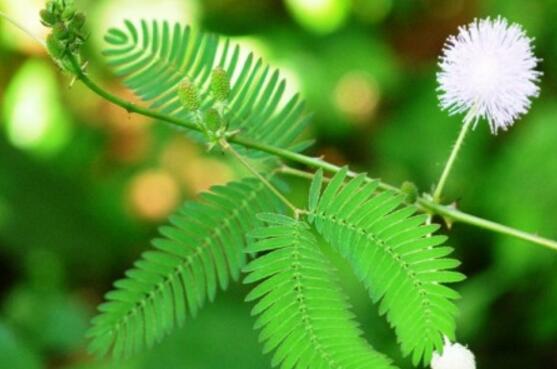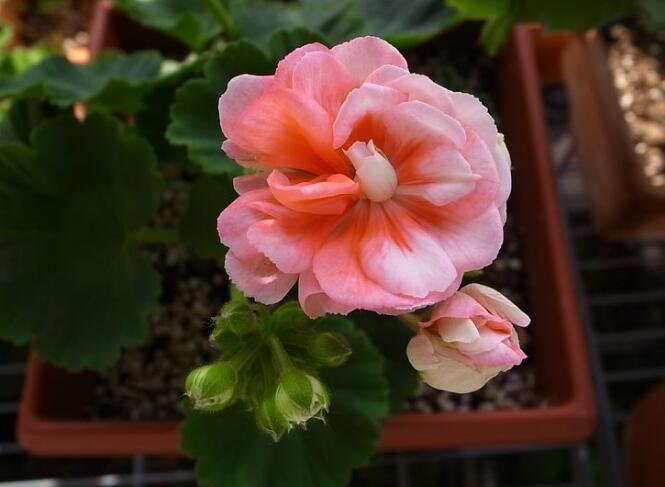What if Mimosa has worms? Mimosa pest control / slug spray
As an active plant, mimosa is welcomed and loved by everyone, and it is raised at home by many flower friends, which adds a lot of color to our life. Mimosa is well known for its strong adaptability, and it is not easy to be disturbed by diseases and pests, but if it is too negligent in management, mimosa will also grow insects, thus affecting ornamental, then how to do mimosa with worms? The following is mimosa pest control, let's go and have a look.
First, what if the mimosa grows bugs? buy medicine and spray it.

Mimosa is adaptable, so it is rarely disturbed by diseases and insects, but on the Internet, there are still many flower friends who ask what to do if mimosa grows bugs. The editor suggests: if there is a flower and tree market near your home, you can buy insecticide from it and spray it; but if your home does not have a flower and tree market, you can take the following measures to deal with it urgently:
1. Deworming with toilet water: mimosa grows worms, usually in summer, when you should have toilet water at home. At this time, you can drop a few drops of toilet water into the water when you water the mimosa.
2, electric mosquito incense tablets deworming: in addition to toilet water, we can also use electric mosquito incense tablets, buy it into the basin, can effectively deworming, although not completely, but can alleviate.
3. Cigarette repellent: if you don't have the above two, use cut tobacco! Take the silk out of the cigarette and soak it in water for 2 or 3 days. The yellow water can kill insects. Of course, if you are not afraid of waste, spreading incense tobacco on the potted soil also has an insect-repellent effect.
4. Laundry and chili deworming: in case you don't have any of the three things above, use laundry and chili peppers. You must have them! Spray with 5% detergent water, and then sprinkle some pepper particles into the flowerpot, the deworming effect is good.
II. Control of diseases and insect pests of mimosa
Mimosa worms how to do, the above is a general method, we can try. According to the editor, mimosa is basically free of diseases and insect pests, and even if there is, it is most likely to be a slug. If it is, you can control it with fresh lime powder in the morning.
If it is not a slug and the newly sown mimosa seedlings are eaten by worms within two days of growing leaves, they may be pests such as beetles, ground tigers, slugs and so on. At this time, flower friends can bury some carbofuran, or irrigate carbofuran water, but this is highly toxic, we should pay attention to safety.
Third, the leaves of mimosa turn yellow
In the culture method of mimosa, we have introduced that it has requirements for light, water and fertilizer, temperature and so on, but once we can not meet it, its leaves will turn yellow. So what if the mimosa leaves turn yellow? we need to find out the cause before we can solve the problem. Generally speaking, there are five reasons for the yellowing of mimosa leaves. [view details]
Fourth, mimosa withered.
In life, when many flower friends raise mimosa, they will encounter the situation of mimosa withering. At this time, flower friends must not be in a hurry, but should calmly look for the cause. Only when they know the reason, can they solve the problem. With regard to the causes of mimosa withering, the editor summed up four points, including exposure to the sun. [view details]
With regard to the problems encountered by the mimosa, the above introduction is very clear. In order for the mimosa to grow healthily, we finally remember it. In fact, mimosa is easy to raise, such as diseases and insect pests, most flower friends will not encounter it at all, but once it appears, it is very troublesome! With regard to the content of mimosa diseases and insect pests, the editor has introduced this, hoping to give you some help.
What to do with the growth of forsythia? control of diseases and insect pests of Forsythia suspensa / 3 insect pests and 3 diseases
In the growth process of Forsythia suspensa, the last thing we want to encounter is diseases and insect pests, this kind of problem is very harmful to the plant, which will not only affect its ornamental, but also lead to the phenomenon of plant wilt. So what to do when forsythia has grown into worms? How to control the diseases and insect pests of Forsythia suspensa? Next, the editor will take you to learn about it.
First, how to do forsythia forsythia long worm, find the reason
If you want to know what to do with Forsythia suspensa worms, first of all, we have to understand what kind of insects grow, so that we can deal with them pertinently, because the treatment methods of each kind of diseases and insect pests are different, and the details are described in detail below. Friends who have trouble in this respect or not can all come to know about it. After all, it is a precaution.
II. Pest control of Forsythia suspensa (pest)
1. Liriomyza sinensis
Liriomyza huidobrensis this pest will gradually eat the leaf tissue of Forsythia suspensa, thus forming a serpentine white submersible channel, its excreta is black continuous linear production in the passageway, adults lay eggs and feed on round spots, and in serious cases, it will also lead to the phenomenon of plant death.
Control method: the high incidence period of this pest is from February to April every year, at this time we must pay more attention to it. When dealing with the diseases and insect pests of Forsythia suspensa, we can directly use 5000 times the solution of miramine wettable powder to spray and kill it.
two。 Spodoptera litura
Spodoptera litura is a kind of leaf-eating pest, its high incidence period is in the summer every year, so we must pay special attention at this time. This pest mainly feeds on the leaves of Forsythia suspensa, and even causes plant death in severe cases.
Control method: for this kind of forsythia plant diseases and insect pests, we can use 2.5% cypermethrin EC 2000-3000 times to spray it.
3. Slug
Slug, also known as Snotlout, is a mollusk that looks like a snail without a protective shell. It mainly threatens the leaves of Forsythia suspensa, which will gradually erode, resulting in a lot of wormholes in its leaves.
Prevention and control methods: when we deal with the diseases and insect pests of Forsythia suspensa, we can make use of its habit of climbing out and feeding activities after watering, after rain, early morning, evening, and cloudy days, and catch them manually with wire strings.
3. Pest control of Forsythia suspensa (disease)
1. Leaf spot disease
Leaf spot disease, through its name, we know that it is harmful to plant leaves, in the onset of Forsythia suspensa leaves will appear a lot of irregular disease spots, and with the passage of time, there will be small black spots, which will affect the ornamental.
Control methods: when we deal with the diseases and insect pests of Forsythia suspensa, we can use 50% carbendazim wet powder 500 times to spray the diseased plants, which is generally sprayed once every 7-10 days, and can be cured after 3-4 times.
two。 Rot disease
Rot, also known as skin rot, is a common disease of Forsythia suspensa. This disease appears irregularly and may appear in every season. There are many small black spots on the trunk when the disease occurs, and it will gradually spread to the lower part of the tree with the passage of time. Finally, the plant gradually rotted.
Prevention and control methods: when dealing with the diseases and insect pests of Forsythia suspensa, we can use a bottle of mother liquid to add 30 kg of water diluent, and then apply it on the plant, generally about 15 days once, 2-3 times can be cured.
3. Powdery mildew
Powdery mildew is a kind of disease with high incidence of Forsythia suspensa. This disease mainly threatens the leaves of plants. There will be many dust-like mildew spots on the leaves when the disease occurs, which will cause the leaves to turn green at the initial stage, and in serious cases, the whole leaves will be covered with powdery mildew layer. As a result, the plant can not carry out photosynthesis and gradually atrophy.
Control method: in the prevention and control of forsythia's diseases and insect pests, we can use 1000 times of methyl topiramate wettable powder to spray the plant, usually once every 10 days, about 2-3 times can be cured.
What to do when tennis flowers grow worms? pest control of tennis flowers / 2 insect pests 2 diseases
In the process of cultivating tennis flowers, the last thing we want to encounter is diseases and insect pests, this kind of problem is very harmful to the plant, which will not only affect the beauty of the plant type, but also lead to plant death. So what should I do if there is a bug in tennis? How to prevent and control diseases and insect pests of tennis flowers? Next, the editor will take you to learn about it.
First, what if the tennis flower grows worms? find the reason.
If you want to know what to do with tennis flower bugs, first of all, we have to understand what kind of insects grow, so that we can deal with them pertinently, because the treatment methods of each kind of diseases and insect pests are different, and the details are described in detail below. Friends who are troubled in this respect can learn about it.
II. Pest control of tennis flowers (pests)
Slug
Slug, also known as Snotlout, is a mollusk that looks like a snail without a protective shell. It mainly threatens the leaves of tennis flowers and gradually erodes them, resulting in a lot of wormholes in their leaves. Very beautiful.
Prevention and control methods: when we deal with this kind of tennis flower diseases and insect pests, we can make use of its habit of climbing out and feeding activities after watering, after rain, early morning, evening, and cloudy days.
Root nematode
Root nematode is a highly specialized omnivorous plant pathogen nematode, it is very harmful to the plant, at the beginning of the leaf will appear many red spots, and with the passage of time will cause the leaf to fall off gradually, the plant will gradually dry up.
Control methods: when we deal with root nematodes, which are diseases and insect pests of tennis flowers, we can use 10 grams of line phosphorus or 5% Yishubao to treat the plants. generally, we can use the medicine once every 5-7 days, and the pest can be thoroughly understood 2-3 times.
III. Pest control of tennis flowers (diseases)
Rust disease
Rust is a relatively high incidence of diseases and insect pests of tennis flowers. This disease mainly threatens the leaves, stems and fruits of plants. When the disease occurs, many blister spots will appear in the affected parts, and when serious, the blister spots will be dense and the plants will die quickly as a result.
Prevention and cure: when rust occurs on tennis flowers, we can spray it with 2000 times of 50% verapamil wettable powder, which is usually sprayed once every 7-10 days and can be cured once or twice.
Powdery mildew
Powdery mildew is a disease caused by powdery mildew infection. Many white dust-like disease spots appear on the leaves of tennis flowers at the time of the disease, and gradually cover the whole leaf surface over time. As a result, the plant is unable to carry out photosynthesis and gradually shrinks and dies.
Prevention and treatment methods: if we find the symptoms of powdery mildew on the plant, we must deal with it as soon as possible. during the treatment, we can use triadimefon 800 times liquid spray to treat the plant, usually once every 7-8 days. Generally, it can be cured after three consecutive sprays.
- Prev

How to deal with saffron worms, saffron pest control / pesticide control
Saffron is a plant with high medicinal value, but no matter how effective it is, if there are diseases and insect pests, it will still affect the overall medicinal properties, and in serious cases, it will be able to make it a waste and worthless. So how to deal with saffron worms? the most direct way is to kill them with chemicals.
- Next

How do geraniums grow bugs? pest control of geraniums / 2 insect pests and 4 diseases
Geranium is not a common plant in people's life, which has a very high ornamental value. However, in beautiful flowers, if there are diseases and insect pests, they will gradually wither. So what should we do about geraniums growing worms? In fact, the method is very simple, as long as you confirm the cause and prescribe the right medicine.
Related
- Fuxing push coffee new agricultural production and marketing class: lack of small-scale processing plants
- Jujube rice field leisure farm deep ploughing Yilan for five years to create a space for organic food and play
- Nongyu Farm-A trial of organic papaya for brave women with advanced technology
- Four points for attention in the prevention and control of diseases and insect pests of edible fungi
- How to add nutrient solution to Edible Fungi
- Is there any good way to control edible fungus mites?
- Open Inoculation Technology of Edible Fungi
- Is there any clever way to use fertilizer for edible fungus in winter?
- What agents are used to kill the pathogens of edible fungi in the mushroom shed?
- Rapid drying of Edible Fungi

